Khai Dinh's tomb, also known as Ung Lang, stands out in the historic city of Hue as a significant part of the Hue mausoleum complex. Its exceptional architecture features intricate ceramic mosaics, creating a stunning sight that captivates visitors from all ages. Visit the Mausoleum of Emperor Khai Dinh with IZITOUR to appreciate the unique blend of history, culture, and architecture preserved in this sacred place!
Introduction to Khai Dinh's tomb (Ung Lang)
- Opening hours: from 7:00 AM to 17:30 PM every day of the week.
- Khai Dinh Tomb entrance fee: 150,000 VND for adults and visitors above 12 years-old or with a height over 1,3 metres. Children from 7 to 12 or heights from 0,8 to 1,3 metres will be charged 30,000. Toddlers are free.
King Khai Dinh's tomb stands out among the Nguyen Dynasty's mausoleums, celebrated for its preservation and advancement of Vietnam's historic architectural accomplishments. The tomb boasts intricate and elaborate design, incorporating distinct refined artistic and architectural elements that blend the cultural aesthetics of both the East and West. If you find out about different Nguyen kings’ tombs, you may notice that each king's tomb usually shows quite clearly the personality and style of a king. Therefore, although there are many mausoleums in Hue, each tomb has a different design, colour and texture, offering an attractive beauty to explore.

King Khai Dinh was a very careful and detail-oriented ruler. So when he wanted to construct his tomb, he carefully examined different options. After consulting many geography masters, he decided to build his tomb on the hills of Mount Chau Chu, which is in Thuy Bang village, near Huong Thuy city. This location is outside the main imperial city of Hue and about 10 km away from the city centre.
What makes this mausoleum remarkable is that it was the last one built during the Nguyen Dynasty. King Khai Dinh (1916-1925) was the 12th king of the Nguyen Dynasty and also the last king to build the mausoleum, preparing for his pass away.
The architectural highlights of Khai Dinh's tomb

Khai Dinh tomb Hue along with many other relic complexes in the ancient capital has been recognised by UNESCO as a world cultural heritage site. Khai Dinh's mausoleum is characterised by unique architecture, refinement in every detail that no picture can reproduce. You have to visit, touch, feel, see to feel the truth. The overall design is extremely unique that few other mausoleums from the Nguyen dynasty compare to it.
Unlike most other mausoleums, the Mausoleum of Emperor Khai Dinh is smaller in size but required the most time, effort, finance, and design creativity for its construction. It took almost 11 years, from 1920 to 1931, to complete King Khai Dinh's tomb.
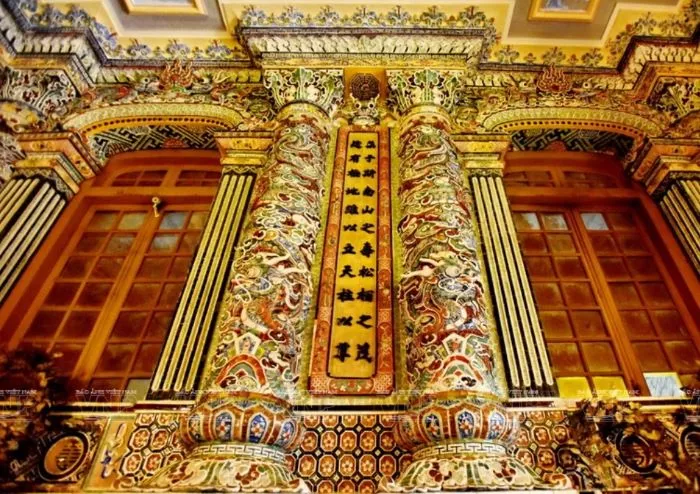
King Khai Dinh's tomb was constructed in a rectangular shape and has 127 steps leading to the top. The main materials used for building it include cement, iron, steel, porcelain, and glass, which were sourced from countries like Japan, China, and even some tiles from France were used.

These factors made Khai Dinh's tomb special and reflected the lavish life he led. The porcelain mosaic art, with its intricate details, adds elegance and is used throughout the tomb's decoration. The most impressive is the burial area of King Khai Dinh with many details showing the majesty and superficiality of this king.
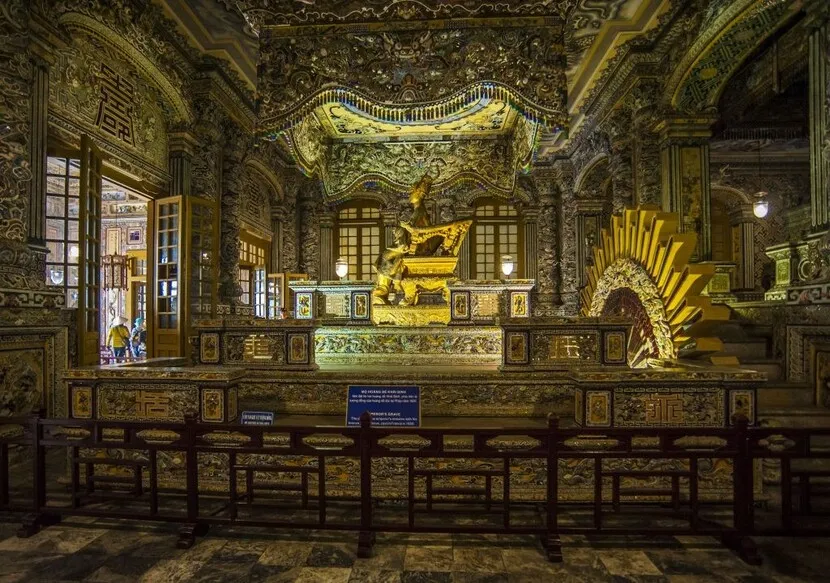
Intricate decoration from various materials
According to ancient opinion, people believed that there should be lots of pictures of soldiers, horses, and courtiers outside the tombs of kings to avoid feeling alone. This sacred site is also a must-visit for those interested in Vietnam’s imperial history, with interesting areas that blend Eastern and Western cultures.
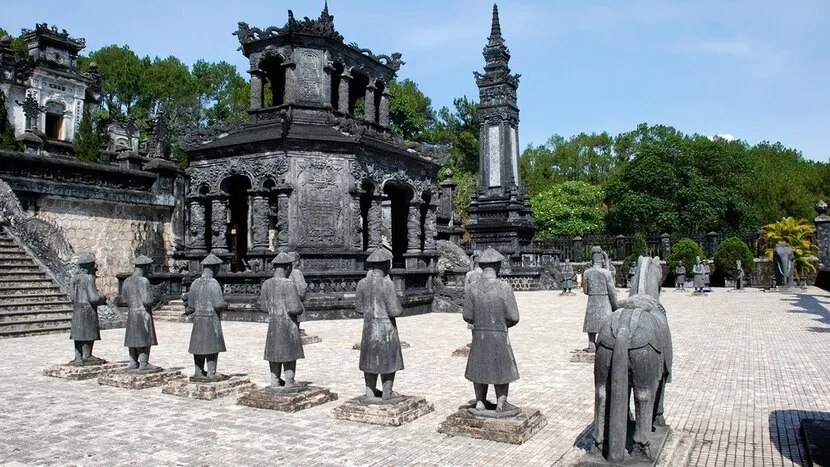
Outside are statues of mandarins and military generals guarding King Khai Dinh's royal tomb
When is the best time to visit?
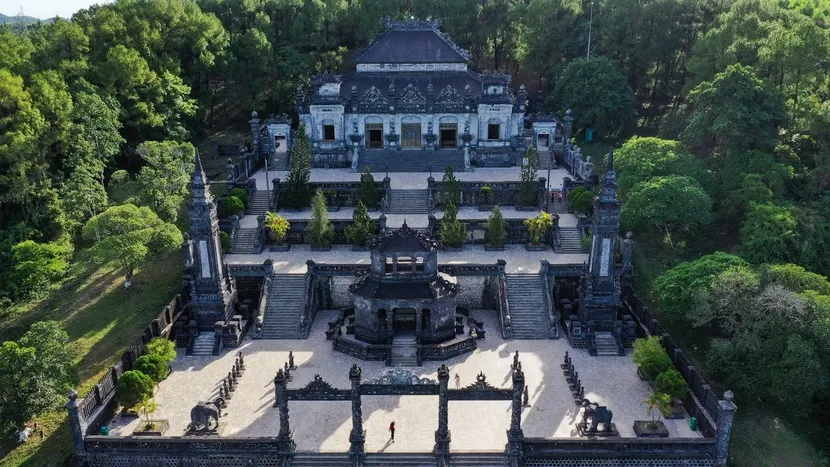
The best months for a trip to Hue and exploring Khai Dinh's tomb are January and February. These months offer pleasant weather, perfect for sightseeing and photography. The mild climate enhances the overall experience, making your journey more enjoyable.
In particular, consider visiting during holidays and New Year's Day when Khai Dinh's tomb will be open for free. Make sure to include this attraction in your travel plans if you're in Hue during these special times.
How to go to the Khai Dinh's Tomb?
Khai Dinh's tomb is only about 10 km south-west of the city centre, so you can use many different vehicles to get around here.
Getting around by car or motorbike
You can choose to go by car, taxi, or if you love the feeling of freedom, you should try riding a motorbike to also see the beauty along both sides of the road leading to Khai Dinh's tomb. From the city centre, transfer on the road to Highway 49 and then follow the signs on both sides of the road.
Going by bus
If you want to save money and have plenty of time for your trip, you can choose to travel by bus. Take the bus near Dong Ba market - Tuan market. This bus will stop right at King Khai Dinh's tomb, taking you right there.
The Khai Dinh Tomb is a special example of old-time architecture, blending various cultures, materials, and designs together. It's a captivating and exciting place to visit in Hue, offering lots of things to explore. We hope the information shared by IZITOUR inspires you to explore this important historical monument during your journey to Hue.
To see more about Hue:
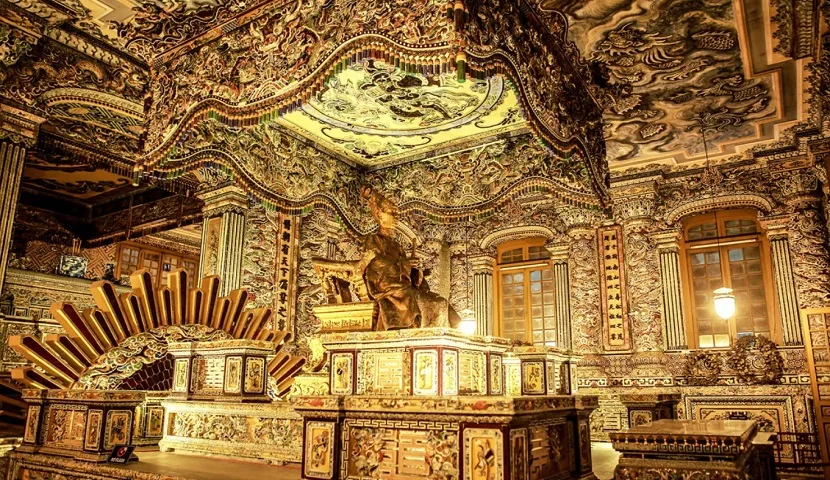








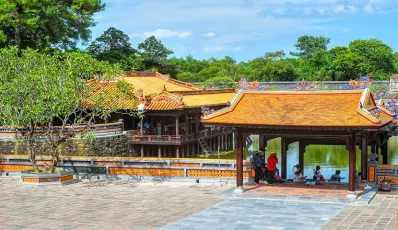


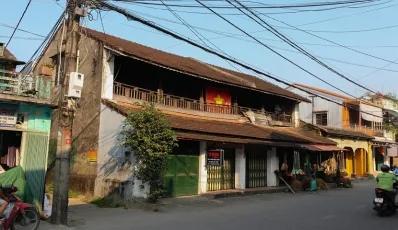
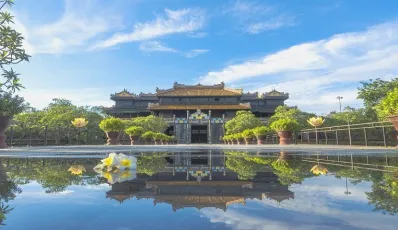
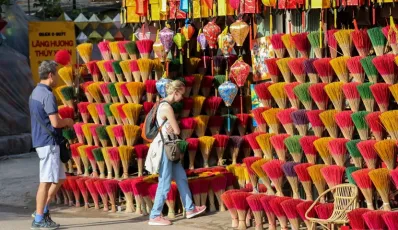
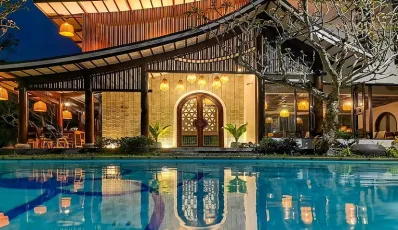





 TRAVELERS' CHOICE 2025
TRAVELERS' CHOICE 2025 



01 Comment
Guyana
I heard great reviews about Hue from my friends, they've already done Vietnam tour. I was really inspired to visit here, it would be incredible to see tombs by our own eyes.
Write Reply